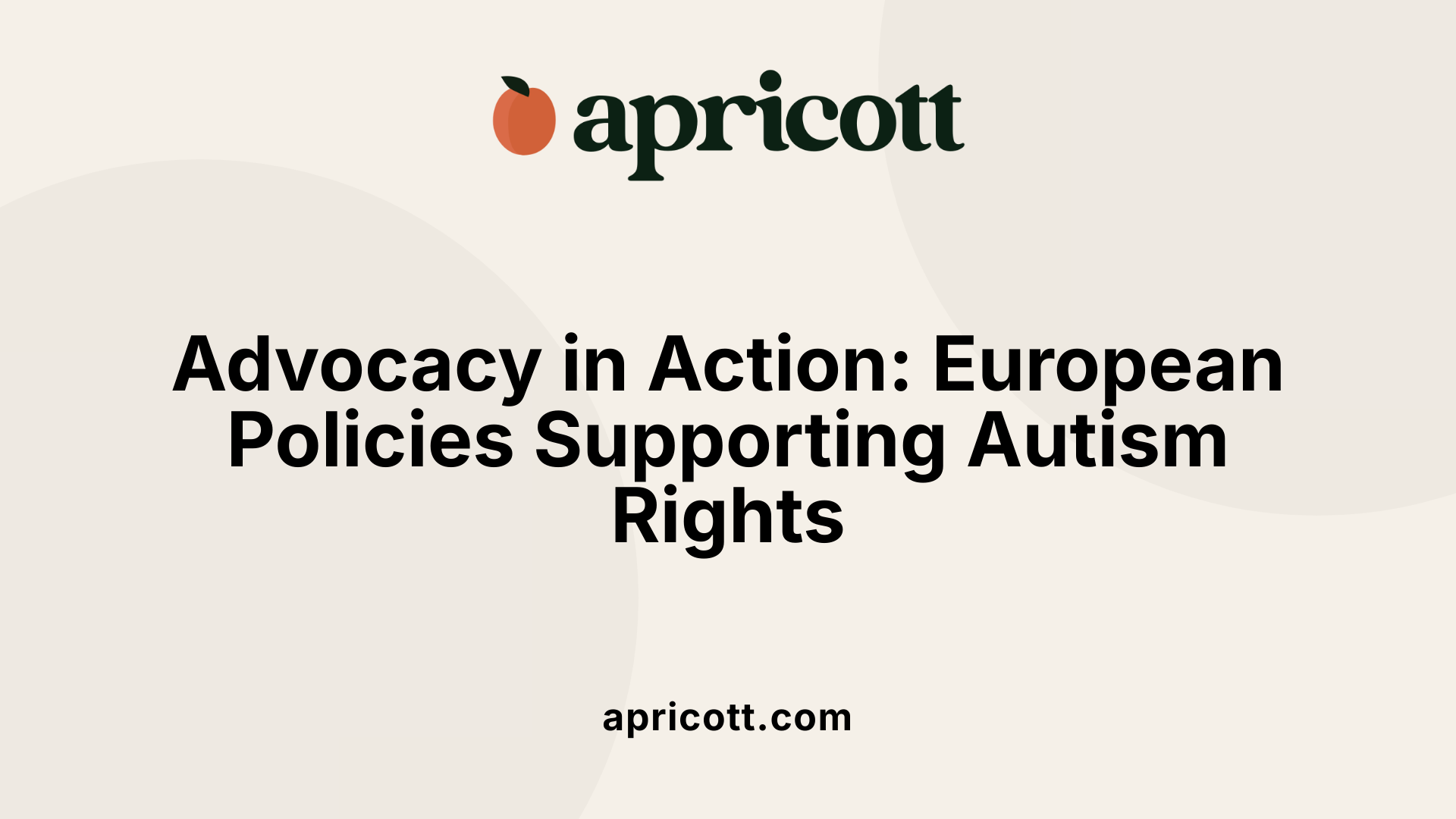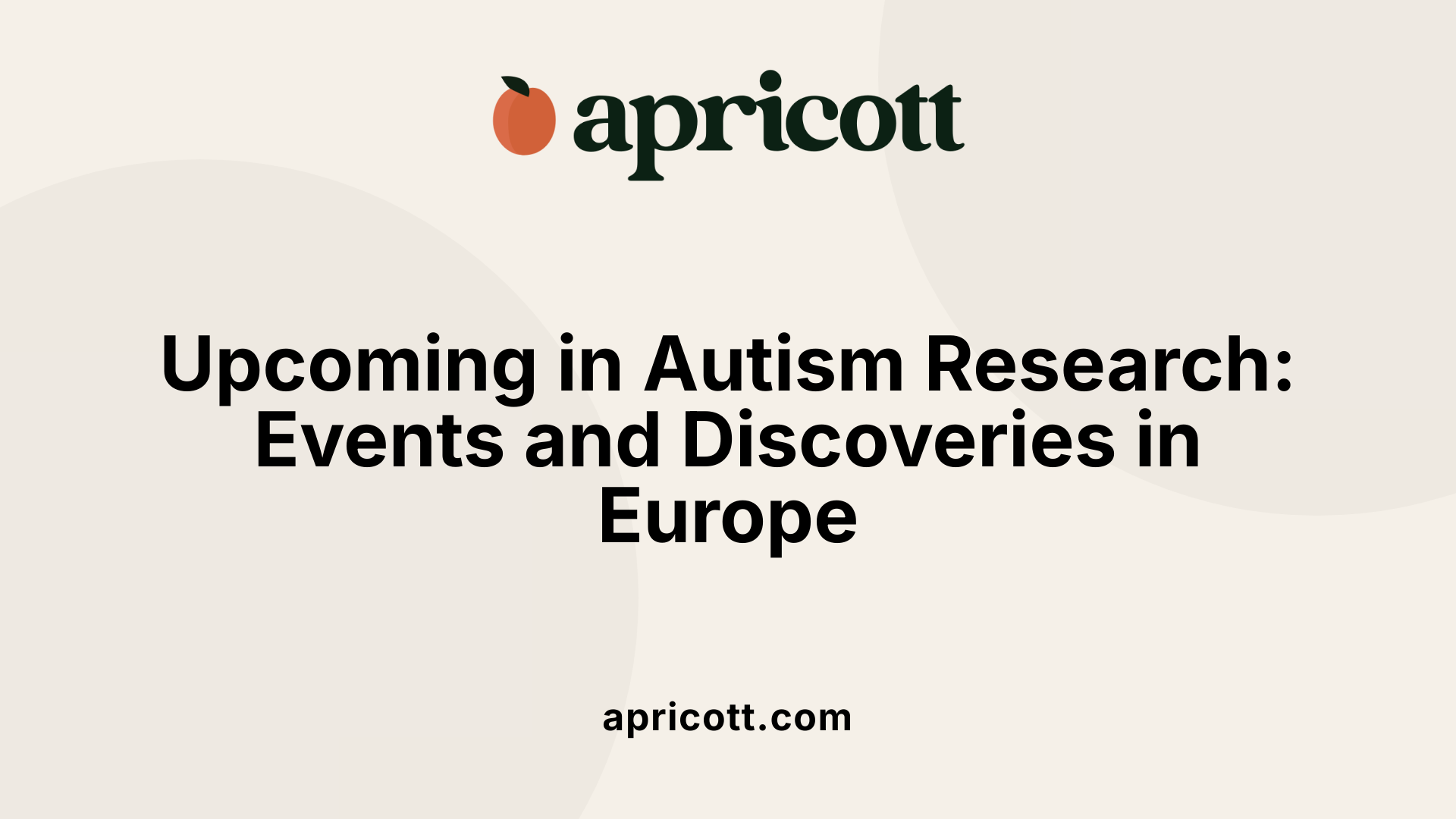August 5, 2025
Enhancing Understanding and Support for Autism Across Europe
Autism spectrum disorder (ASD) is a complex neurodevelopmental condition affecting approximately 1 in 100 individuals globally, with rising prevalence across Europe. Over the past three decades, increased awareness, evolving diagnostic criteria, and demographic factors have contributed to a significant rise in reported cases. This article explores the prevalence, diagnosis, treatment, policies, and advocacy efforts shaping the landscape of autism in Europe, highlighting recent research, key organizations, and upcoming events dedicated to enhancing the lives of autistic individuals.

Recent studies estimate that about 0.73% of children in Europe are on the autism spectrum, roughly 1 in 100 children. This rate is slightly below North America's prevalence, which hovers around 1.01%, and significantly lower than the United States, where some regions report rates as high as 1.12%. In contrast, Asia's estimated prevalence is approximately 0.41%, indicating a lower occurrence.
Globally, autism prevalence has been rising over the past decades. Improvements in awareness, diagnostic criteria, and screening have contributed to this increase. While Europe's rates are close to the global median of approximately 1%, actual figures can range widely depending on specific countries, study methods, and healthcare access.
The reported figures show that autism affects roughly 1% of the world's children, with variations across regions caused mainly by differences in diagnostic practices, awareness levels, and research infrastructure.
Europe’s approach to autism treatment and support involves a range of strategies designed to enhance early diagnosis, intervention, and access to services. Many European countries have implemented or are developing comprehensive autism strategies. These aim to raise awareness among the public and healthcare professionals, reduce waiting times for diagnosis, and improve support systems for autistic individuals and their families.
Policy initiatives such as the European Parliament’s Written Declaration on Autism encourage the harmonization of services across countries. This promotes collaboration in research and best practice sharing to improve overall outcomes. Despite these efforts, gaps remain, including delays in diagnosis, limited availability of certain therapies, and shortages of trained healthcare providers.
Overall, European countries are striving to ensure that autistic people receive timely, evidence-based support. Continued efforts focus on reducing disparities and strengthening policy frameworks to promote the rights and well-being of autistic individuals.

Autism-Europe stands out as the primary organization advocating for the rights and inclusion of autistic individuals across the continent. Founded in 1983 and headquartered in Brussels, Belgium, Autism-Europe connects nearly 90 national and regional associations from 34 countries, including 26 EU member states. It works to influence policy through advocacy, awareness campaigns, and participation in European institutions.
The organization actively promotes the principles outlined in the 'Charter for Persons with Autism,' adopted in 1992 and recognized by the European Parliament in 1996. Autism-Europe also played a role in developing the UN Convention on the Rights of Persons with Disabilities (UN CRPD) in 2006, which reaffirms the rights of people with disabilities, including autism.
European policies have seen concrete advancements such as national disability strategies and ratification of international treaties. These efforts aim to improve accessibility, uphold inclusive education, and combat stigma. While progress varies among member states, the focus remains on ensuring that autistic individuals have equal opportunities and improved support systems.
Recent data indicates that autism prevalence varies across Europe, with estimates including around 0.8% among 5-18-year-olds based on register-based studies and up to 1.4% according to population studies. For example, prevalence rates are reported as 1 in 100 in Iceland, 1 in 144 in France, 1 in 160 in Poland, and 1 in 57 in the United Kingdom.
Studies also reveal that autism diagnoses are more common among males, with a male-to-female ratio of about 3.5:1. Research shows that autism diagnosis among primary school children is four times higher than among secondary school students, highlighting possible delays or challenges in diagnosis for older children.
Large European projects, such as the AIMS-2-TRIALS involving 14 countries, are collecting extensive data on autism's overlapping conditions, early developmental signs, and intervention outcomes. Advances in genetic testing, neuroimaging, and early screening are improving early detection, though access to these technologies remains uneven across the continent.
European authorities are increasingly committed to developing an EU-wide autism strategy. This includes funding initiatives aimed at improving diagnosis, support services, and societal inclusion, all grounded in the latest scientific research.
| Aspect | Data Estimate | Details |
|---|---|---|
| Prevalence among youth | 0.8% – 1.4% | Varies by region and study type |
| Country-specific rates | Iceland: 1/100 | France: 1/144 |
| Male-to-female ratio | 3.5:1 | Higher prevalence in males |
| Key projects | AIMS-2-TRIALS | 14 European countries involved |
As research continues to evolve, these statistics inform policy and aid in tailoring services to meet the needs of autistic individuals across Europe.

Recent studies reveal that autism spectrum disorder (ASD) affects roughly 1 in 100 people worldwide. Over the past 30 years, cases have risen significantly across countries, influenced by increased awareness, changing diagnostic criteria, earlier diagnoses, and demographic factors. Although environmental contributors are being explored, more research is needed to fully understand their impact.
In Europe, efforts like those by ASDEU and Autism-Europe aim to improve understanding and measurement of autism prevalence. For example, current estimates indicate that about 0.8% to 1.4% of European children aged 5-18 are diagnosed with ASD, with prevalence among primary school students being four times higher than among those in secondary school. The male-to-female ratio remains around 3.5:1, reflecting higher diagnosis rates in males.
Recent review studies, covering data from 2015 to 2020 across 11 European countries, help paint a clearer picture of regional differences. Variability in prevalence figures—such as 1 in 100 in Iceland, 1 in 144 in France, and 1 in 57 in the UK—can be partly attributed to differing diagnostic and reporting practices. These figures highlight ongoing challenges and the importance of standardized, culturally sensitive approaches.
Yes, several important events focus on autism research, advocacy, and policy development. The upcoming Autism-Europe Congress 2025 is a major highlight. Scheduled for September 11-13, 2025, in Dublin, Ireland, at the RDS Venue in Ballsbridge, this congress emphasizes themes like "Quality of Life – Research, Policy and Practice." It will bring together researchers, advocates, and autistic individuals from across Europe to foster dialogue and collaboration. Organized by Autism-Europe, this series of conferences plays a vital role in shaping the future landscape of autism awareness and support.
Differences in diagnosis and support systems across Europe are notable. Nordic countries tend to provide more comprehensive and inclusive support services, benefiting from stronger healthcare infrastructure. Conversely, Eastern and Southern regions often face obstacles such as limited access to diagnostic services, longer wait times, and shortages of trained specialists.
These discrepancies are partly driven by divergent diagnostic criteria—broader criteria like those used in the UK or the US may lead to higher reported prevalence, whereas stricter European standards can cause underdiagnosis. Despite progress, many regions still encounter delays in diagnosing autism and providing adequate support, especially for adults.
Achieving more uniformity requires policy harmonization aimed at early detection, reducing diagnosis delays, and ensuring equitable access to quality services across all European countries. Efforts to improve awareness and training are crucial steps toward closing these gaps.
Despite significant progress in understanding and supporting individuals with autism, Europe continues to face challenges related to diagnostic disparities, service access, and societal inclusion. The growing body of research and increasing advocacy efforts underscore the importance of harmonized policies, innovative interventions, and comprehensive support systems. Upcoming events like the Autism-Europe Congress 2025 will serve as vital platforms for collaboration and progress, fostering a future where autistic individuals across Europe can achieve greater quality of life and full inclusion in society.